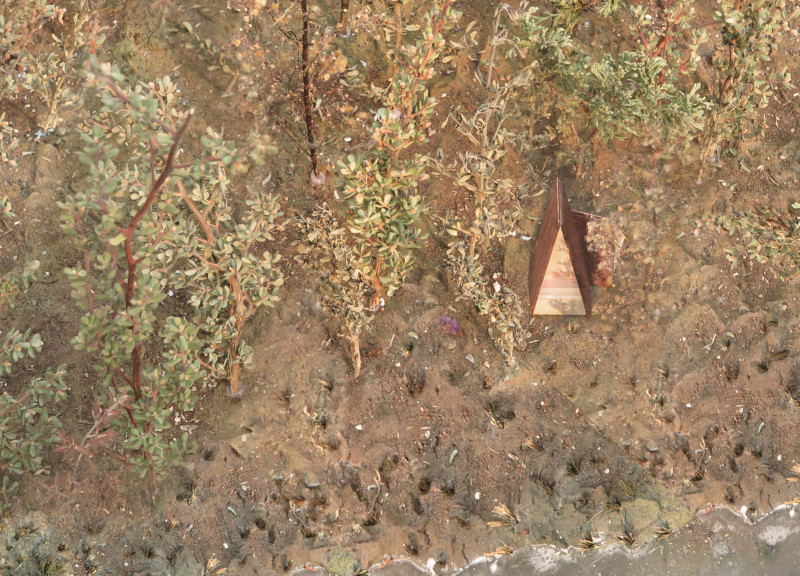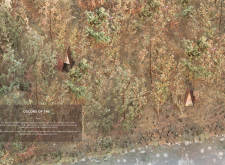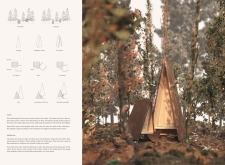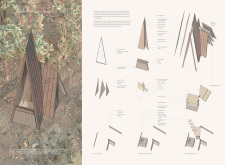5 key facts about this project
The cabins are strategically placed in the forest to minimize their impact on the ecosystem while enhancing the user experience. By maintaining a low profile within the densely wooded area, the design encourages visitors to explore their surroundings, fostering a connection between architecture and nature. The use of large windows allows natural light to permeate the interior, reinforcing the bond with the external environment.
Sustainable Material Choices
One significant element of this architectural project is its focus on sustainability through material selection. Reclaimed wood is predominantly used for the wall cladding and flooring, reflecting the project’s commitment to environmental responsibility. Cross-Laminated Timber (CLT) serves as the main structural component, known for its strength and stability. Double-plane clear glazing is utilized for windows, ensuring thermal efficiency while providing unobstructed views of the forest. Galvanized steel is employed for the roofing system, offering durability and longevity. Natural insulation enhances thermal performance and reinforces the project’s ecological stance.
These choices not only ensure a minimal ecological footprint but also integrate the cabins into their context, making them part of the natural palette of the forest.
Unique Architectural Approaches
The architectural design utilizes a distinctive triangular form that creates a visual dialogue with the surrounding trees. This geometry provides structural benefits while minimizing material use. By employing sloping roofs, rainwater collection systems are effectively integrated, promoting water conservation. The open floor plans allow for flexible usage, with spaces that adapt to various activities, from solitary retreats to community gatherings.
Strategically designed communal areas encourage interaction among users, promoting community engagement without compromising individual privacy. Each cabin's layout encourages an intimate experience with nature, further enhanced by carefully positioned terraces and outdoor spaces that extend the living area beyond the walls.
This project exemplifies a conscientious approach to architecture, demonstrating how thoughtful design can facilitate personal connection with the environment. For more detailed insights into the architectural plans, architectural sections, and architectural designs, readers are encouraged to explore the project presentation further. This examination can provide a deeper understanding of the architectural ideas that inform the project.


























